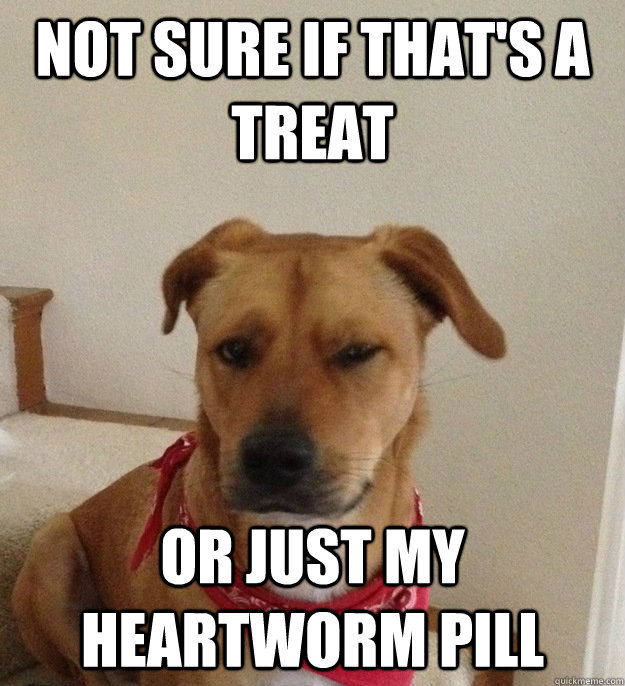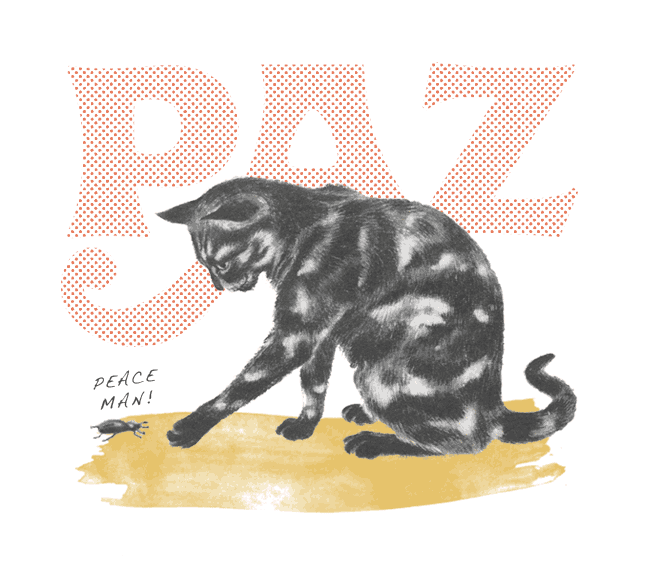Blog by Dr. Cindy Carter
Mosquitoes suck! Literally!! And as we humans are avoiding our own mosquito-borne diseases lately, it feels like a good time to review the most important one affecting dogs and cats: Heartworms.
“The Circle of Life”
Baby heartworms, known as microfilaria, are picked up by a mosquito when feeding on a heartworm positive dog. They grow inside of the mosquito to an infective larval stage, and are spread by crawling down the proboscis (fancy word for the sucking mouthparts) of the mosquito when it feeds on a dog or cat. They then travel through the subcutaneous tissue, muscle, and blood vessels toward the heart. This journey takes a few months, and during this time the larvae develop from jouveniles to adults. (Here’s a gross fact: Adult heartworms are about a foot long! Think of angel hair pasta…in the heart…yuck!) At 6 months after the initial mosquito bite, the worms are sexually mature and can start producing those microfilaria that a hungry mosquito will pick up out of the bloodstream and start the whole cycle over again.
The name heartworm is actually a little misleading, as most adult heartworms actually live not just within the heart, but spread out into the pulmonary vasculature causing damage to the lungs. This is why symptomatic dogs will have a cough or exercise intolerance. However, it is very common for us to diagnose the parasite in a dog with no symptoms, as it can take months from the time of infection until there is enough damage to the heart and lungs for the dog to start showing signs outwardly.
Dogs are the primary host for heartworms, but cats are also susceptible to the parasite. The worms don’t typically survive in as large of numbers in the cat, so they don’t produce offspring. However they can still cause damage to the heart and lungs, most often in the form of asthma. Additionally there is no treatment for heartworm disease in cats, so if they do contract the parasite there is nothing we can do but treat any respiratory symptoms that they develop. The best thing to do for our feline friends is to keep them on a monthly preventative so that the worms never have a chance to cause any damage at all!
So what can we do to protect our pets?
The most important thing you can do to protect your pets from heartworm disease is to keep them on prevention all year-long. There are a variety of oral and topical options, as well as a long-lasting injectable for dogs. The only stages of the heartworm that are susceptible to our current preventatives are within the first 30 days after a mosquito bite, which is why it is so important to remember to dose our pets every 30 days. If we miss a dose of prevention we run the risk of the parasite continuing development into older worms which are no longer treatable with our typical monthly medications.
Miss a dose? Haven’t had your pet on heartworm prevention in a while..or ever? Call us up with any questions or be sure to mention this at your next appointment so we can work together to help protect your babies from heartworm disease!!
Just can’t get enough? For more amazing information about heartworm disease, visit the American Heartworm Society website.








